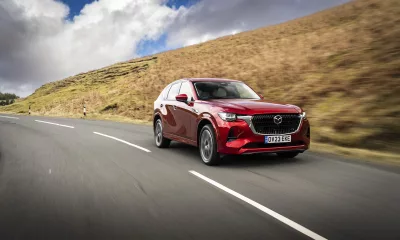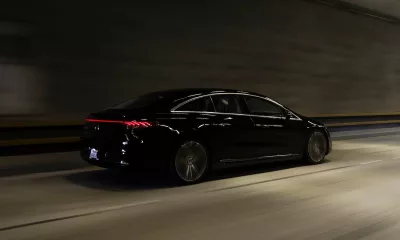
With just two confirmed examples left in the world, we drive the only Jensen Continental Tourer in South Africa…
To many, the pre-Second World War era was a golden age of motoring design. Fuel consumption and aerodynamics weren’t priorities. The exuberance of car design back then resulted in some of the most ostentatious and elegant cars to have graced our roads. A prime example, this 1939 Jensen Continental Tourer Straight Eight was manufactured in the year the war broke out. The factory in West Bromwich, England, was bombed and only two of the six examples built are believed to have survived.
The owner eagerly shares that this is the only one of its kind with spare wheels positioned on each side of the vehicle. He enthusiastically recalls the history of the car. It was originally advertised in The Autocar (still in print today and called Autocar in the UK) where Major JDL Buist saw the ad and purchased it. He was based in Matjiesfontein and imported the Jensen to South Africa. He enjoyed several trips between Cape Town and the small Karoo town.
Back in 2005, the current owner’s son grabbed the chance to buy the vehicle at a massive auction of Tweedside, which was the house belonging to three generations of the Buist family. The Jensen was the only car at the auction and he won the final bid. As the owner says: “It is the story that goes with these cars that makes them special.” The vehicle has had some work done to it: the chrome detailing was repaired and the fuel tank and parts of the ignition system such as the coils and spark plugs have been replaced. Besides this, the Straight Eight is stock and ultra-reliable.
The Jensen’s footprint is as large as it is lovely. It has a commanding presence for all the right reasons. Once the roof is folded, the light-flooded cabin is even more inviting with red leather covering most of the surfaces. Individual windows can be put in place to make the interior more comfortable but we drove it on a mild winter’s day so we lowered the roof and delighted in the elements, as its maker intended.
The straight-eight engine, of Nash origin, turned quickly and the engine settled into a smooth burble. The seats are modestly supportive and absorb surface shocks, although you do sit fairly close to the steering wheel. This is probably a blessing, as turning the wheel during parking or at low speeds requires quite some effort.
Your passengers can relax as there is ample space behind the divider. To gain access, a short metal pin with a tiny glass deflector must be removed; then the fold-up door can be lifted. I was surprised by the sheer amount of space on offer and the windscreen is just high enough to keep some airflow at bay. One of the longest bonnets I’ve ever encountered stretches out in front. It is something you are constantly aware of: the beautiful, flowing fenders covering the front wheels and the Jensen flying bird hood ornament perched in the middle. Everyone waves as you pass.
The metal gearlever is on the left and there are just three gears. With the engine’s abundance of torque, changes are minimal. Swapping cogs is smooth with a solid shift action from the dog-leg first through to the synchromesh second and third. You take your time to shift down from second to first gear; for the rest, it is notably easier than what I expected. The one feature I did miss is a rev counter. Occasionally I would peek at the amply sized speedometer and notice how effortlessly the Jensen cruised at 100 km/h. Top speed is over 150 km/h and there is an overdrive function which further lowers the revs.
The Smiths gauge supplies a water temperature, fuel level, battery amps and oil pressure. The indicator switch is situated at the top of the steering wheel alongside another for the light at the front of the car. Impressively, the steering wheel is adjustable for reach.
You have to drive in a careful and considered manner. Once you press the accelerator, the Jensen responds lazily; when you want to slow down, you need to lower your speed long before your intended stop. The same goes for the steering. There is notable delay; the front axle initially reacts to your input and the rear of the car follows suit. These characteristics merely added to the experience and put a smile on our faces as we drove through the Overberg. The ride is soft and supple, helped by the car’s weight, suspension and those 6.50 x 16 wheels with high-profile tyres.
You can guide this classy dame along the bends with your left hand while your right arm is perched on the beautiful driver’s door. It must have been marvellous to pilot this car through the Winelands all the way to the Karoo … top down, of course. Incidentally, this Jensen featured in an article in CAR’s July 1965 issue. Appropriately, it started with: “South Africa seems to have more than its share of old and interesting cars…” Thankfully, that remains as true now as it did back then.
FAST FACTS
Price in 1939: £845
Engine: 4,2-litre, straight-8, petro
Compression ratio: 6,0 to 1
Transmission: 3-speed manual
Power: 90 kW @ 3 500 r/min
Top speed: 153 km/h
Length: 5 030 mm
Width: 1 780 mm
Fuel tank: 86,0 L




